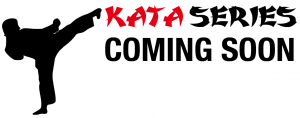
We practiced Jitte recently during our senior Saturday class. This kata series serves to extend karateka knowledge about this kata, including its history and development.
Jitte has 27 movements, and is practised as a defence against the bō, a tall, long staff-like weapon used in Okinawa and feudal Japan. It can be roughly translated as “10 techniques”, implying its intention in describing the practitioner fending-off ten adversaries.
The Shotokan style includes one of the few interpretations of the kata as defending against an attack from the bō. There are powerful open-hand techniques, and a multitude of “secret techniques” – techniques adapted from our kihon to describe defence against such a weapon.
Jitte forms part of the Jion kata group. Apart from its name describing the defence against 10 opponents, some believe that the kata is named as such due to its enbusen, or line of movement, mimicking that of a jitte, a specialised weapon used by samurai during the Edo period of Japan’s history.
 Jion forms part of the “Jion Kata Group.” This kata group consists of Jion, Ji’in, and Jutte. It is a popular kata choice for competition, particularly because it is a kata that exhibits many of the traditional Shotokan stances: zenkutsu dachi (front stance) and kiba dachi (horse stance). It begins in the
Jion forms part of the “Jion Kata Group.” This kata group consists of Jion, Ji’in, and Jutte. It is a popular kata choice for competition, particularly because it is a kata that exhibits many of the traditional Shotokan stances: zenkutsu dachi (front stance) and kiba dachi (horse stance). It begins in the 
 Kata is an essential part of every karateka’s training. At SKKSA, we place special emphasis on the study of kata as it forms the platform on which our training is based. Without kata, the practice of karate lacks focus. And, after all, kata is as beautiful as poetry, as evidenced by practitioners that compete at the highest levels.
Kata is an essential part of every karateka’s training. At SKKSA, we place special emphasis on the study of kata as it forms the platform on which our training is based. Without kata, the practice of karate lacks focus. And, after all, kata is as beautiful as poetry, as evidenced by practitioners that compete at the highest levels.